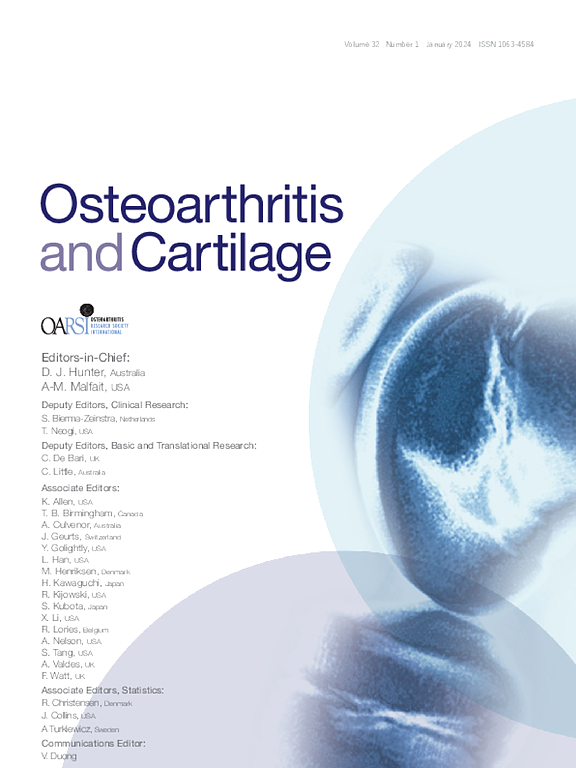The relation of walking forces to structural damage in the knee: The Multicenter Osteoarthritis Study.
IF 7.2
2区 医学
Q1 ORTHOPEDICS
引用次数: 0
Abstract
OBJECTIVE Mechanical loading is an important, modifiable risk factor for knee osteoarthritis (OA). Identifying walking loads associated with disease worsening presents intervention opportunities. Our purpose was to evaluate the longitudinal relation of the baseline vertical ground reaction force (GRF) during walking to worsening bone marrow lesions (BMLs) and cartilage damage using cohort data from the Multicenter Osteoarthritis Study (MOST). METHODS MOST participants with GRF data at baseline and MRI examinations at baseline and 2-year follow-up were included. Peak impact force (PIF) and average loading rate (ALR) from the vertical GRF were analyzed with respect to four joint regions (i.e., the medial and lateral portions of tibiofemoral and patellofemoral joints). Analyses used logistic regression with generalized estimating equations and adjusted for relevant covariates. RESULTS Higher PIF was associated with increased odds of worsening BMLs in the lateral patellofemoral joint (OR (95% CI): 1.33 (1.11, 1.60)) and worsening cartilage damage in the lateral patellofemoral joint (1.48 (1.24, 1.77)), lateral tibiofemoral joint (1.24 (1.03, 1.50)), and medial tibiofemoral joint (1.25 (1.06, 1.48)). Higher ALR was associated with reduced odds of BML worsening in the lateral tibiofemoral joint (0.60 (0.41,0.87)). CONCLUSIONS Higher peak forces when walking were associated with worsening BMLs in the lateral patellofemoral joint and with worsening cartilage damage in regions of the knee associated with higher contact forces during walking. Higher average loading rates were not associated with increased odds of structural worsening (BMLs or cartilage).求助全文
约1分钟内获得全文
求助全文
来源期刊

Osteoarthritis and Cartilage
医学-风湿病学
CiteScore
11.70
自引率
7.10%
发文量
802
审稿时长
52 days
期刊介绍:
Osteoarthritis and Cartilage is the official journal of the Osteoarthritis Research Society International.
It is an international, multidisciplinary journal that disseminates information for the many kinds of specialists and practitioners concerned with osteoarthritis.
 求助内容:
求助内容: 应助结果提醒方式:
应助结果提醒方式:


